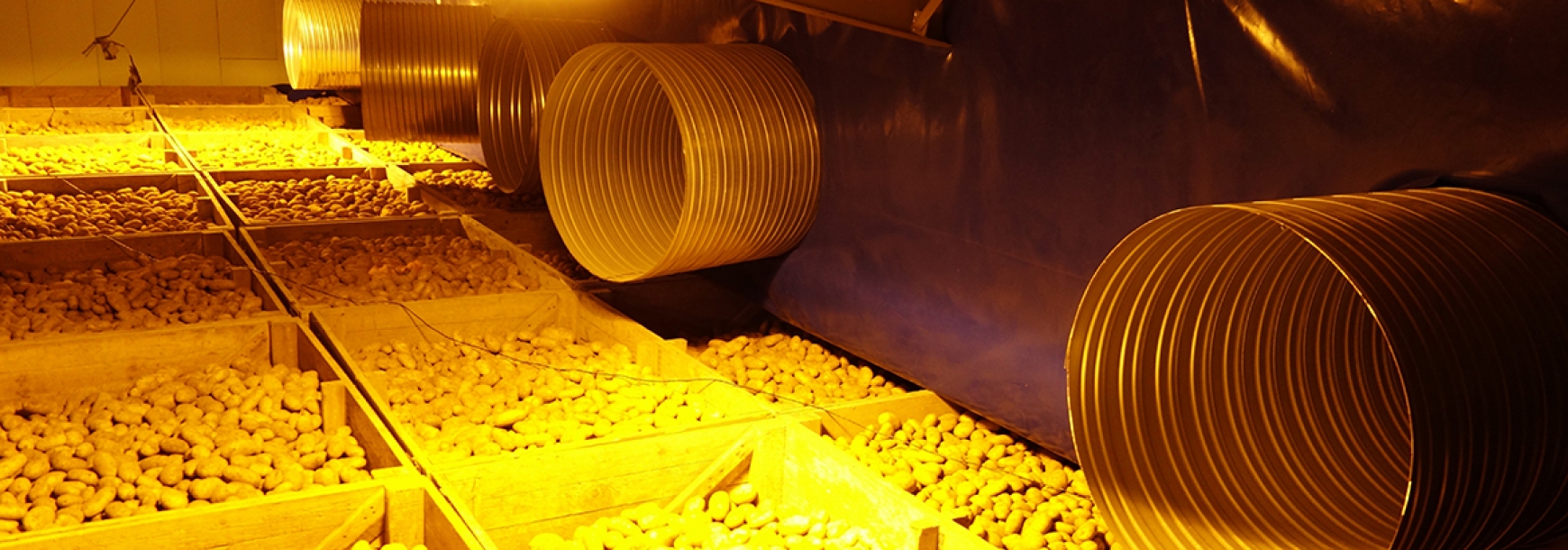Ed and myself have been out and about with our research caps on recently, visiting potato stores, and examining how the store environment is manipulated to maintain potato quality during the crop storage phase.
We are acting as partners in a multi-faceted research project funded by Innovate UK. The project is exploring the use of the sprout suppressant agrochemical, Chlorpropham (CIPC), in potato stores and aims to increase the effectiveness of CIPC application and energy use.
Once harvested, potatoes are commonly stored for varying periods of time before being sent to market or processing. This ensures that a continual supply of potatoes is available to consumers throughout the year. Approximately 3¼ million tonnes of potatoes are housed in stores across Great Britain each year.
The difficulty with storing potatoes, for a prolonged period of time, is that they diminish in size and quality. Disease, rot and sprouting can also reduce quality, so careful monitoring and conditioning of the potato crop is required throughout the storage period.
Cold stores, that are used to prevent any crop degeneration, require large amounts of energy. We’ve been busy taking airflow and temperature measurements inside the cold stores, and we hope to use this information to improve efficiency and storage effectiveness.


